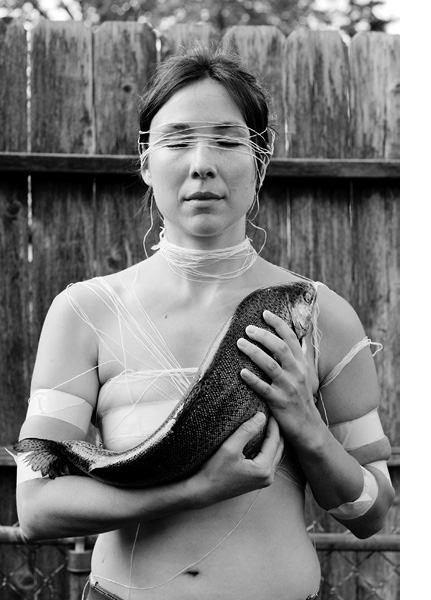
NIICUGNI
first performed on September 21, 2012
Seven Days of Opening Nights Festival and the Maggie Allesee National Center for Choreography at Florida State University, Tallahassee, FL
performed twice in 2012
EMILY JOHNSON / CATALYST
James Everest, Aretha Aoki, Max Wirsing, Bethany Lacktorin, Heidi Eckwall, Joel Pickard, Angie Vo, Jonathan Whitney, Janet Stapleton, Julia Bither, fish-skin lanterns created by volunteers
Minneapolis, MN / New York, NY / Prague, Czech Republic
666638540e666638540m666638540i666638540l666638540y666638540@666638540c666638540a666638540t666638540a666638540l666638540y666638540s666638540t666638540d666638540a666638540n666638540c666638540e666638540.666638540c666638540o666638540m
NIICUGNI
EMILY JOHNSON / CATALYST
“Niicugni” is many things. It is a dance. It is a story made of many. It is a word that instructs us to listen. There is hope here, and death; monsters and laughter; salmon, bear, blood and a never-ending attempt to pay attention.
I think of the land beneath our feet. I think of everyone in the theater—performers and those who came to see the show.
Three years ago, when I saw an exhibit of fish-skin work at a gallery in Alaska, I wanted to learn. Harvesting wild salmon has been part of my family’s life for thousands of years. I still return to Alaska every summer for the Sockeye Salmon Run. We fish, then clean, fillet, de-bone, strip, brine, kippur, freeze, smoke, can and feast on the fish that will feed our family for the year. There is thankfulness in this process, and now, we also sew. The 51 fish-skin lanterns that make the set for “Niicugni” were made by volunteers and for their work, time and interest in learning the skill of fish-skin sewing, I am grateful. Making the lanterns became the dance itself. So “Niicugni” is also people gathering to sew.
When my dad received land from the Alaska Native Claims Settlement Act, he put a map on the counter and questions arose: how do we build a relationship with this land? Can our bodies decipher the lines on this map? Or would it make more sense to be there, feet standing on the ground? And what of the owning? The de-marked lines? The cutting up of land? Why is this how we have chosen to make sense of the world?
“Niicugni” was made as these questions arose so they permeate through. I found no answers, of course. Only more questions: Can we continue to cut up the land, forgetting it is made of our ancestors? Can we create stories and make things for one another? Can we be a tiny part of the world and at the same time, our whole gigantic selves?
“Niicugni” is performed by five cast members. We dance a lot and tell stories, one person plays violin. Forty people from the community stand up and join us on stage at different moments. The lanterns hang over us all. They light up and slowly rise. The ones over the house are affixed with speakers and are part of the sound installation. There are a few surprises.
“Niicugni” is best watched from the corners of the eyes, with a willingness to turn your head; with all of your senses; with slow and steady breathing; with trust and imagination.